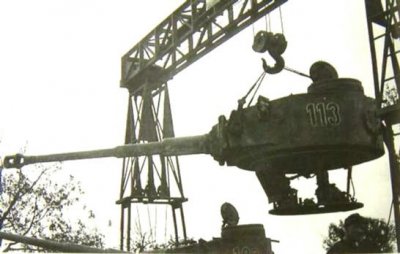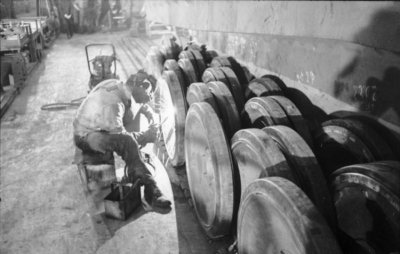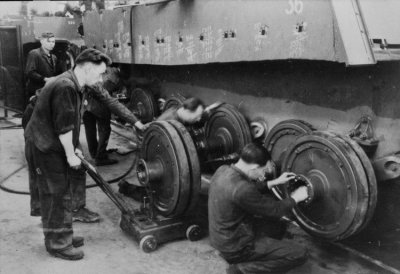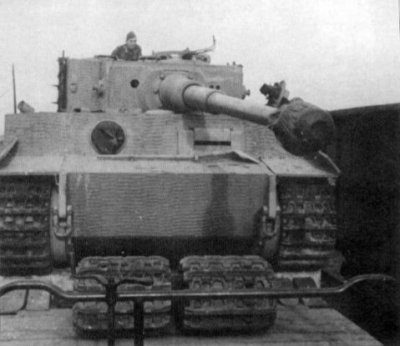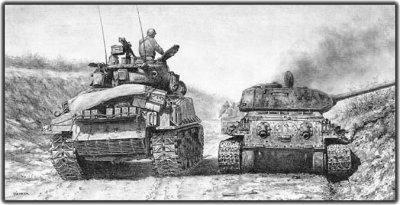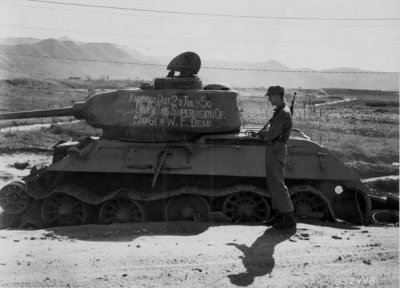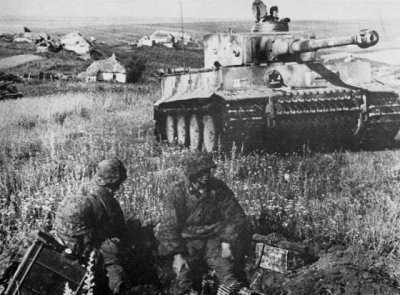71airgrabberRR
Well-Known Member
Tiger and Panther Problems......
Both the Tiger and the Panther used final drives from the smaller Panzer 4 which was a much lighter tank. I'm pretty sure they used a similar transmission too, but the Tiger had power steering assist. The use of lighter weight tank drivetrain items is one reason why these two tank types broke down frequently.
In fact there was a field order forbidding the use of a Tiger or a Panther from towing another one. Im sure this order was broken pretty regularly especially towards the end.
One major maintenance disadvantage for the Tiger tank was that you had to remove the turret in order to replace the transmission or a final drive unit. On the Panther you had a large armored plate that was bolted down just in front of the turret and above the driver and bow gunner that had to be removed first, which was a little better.
Another drawback was the tanks weight and width. On the Tiger and King Tiger the were often too heavy to cross some bridges, so they were transported by rail car. This caused another problem because the tanks were too wide to fit through some tunnels.So they used "transport tracks" which were not nearly as wide as the normal "battle tracks".
These had to be swapped back and forth as the tank was transported to various locations.
I can tell you from personal experience with changing out tracks on the M60 that you do not want to do this very often. Using OVM hand tools and with our whole platoon helping, we could swap out a set of tracks on a single tank in about 4 hours. The track blocks were very heavy by themselves. That was in the motor pool and not under field conditions.
We did get very good at pulling the power packs which consisted of the engine and transmission.We could have everything out in less that 15 minutes....
I doubt the Germans could even come close.......
This is a trait that the American tanks had from WW2 that we carried over to our modern tanks.
Ease of maintenance.
Both the Tiger and the Panther used final drives from the smaller Panzer 4 which was a much lighter tank. I'm pretty sure they used a similar transmission too, but the Tiger had power steering assist. The use of lighter weight tank drivetrain items is one reason why these two tank types broke down frequently.
In fact there was a field order forbidding the use of a Tiger or a Panther from towing another one. Im sure this order was broken pretty regularly especially towards the end.
One major maintenance disadvantage for the Tiger tank was that you had to remove the turret in order to replace the transmission or a final drive unit. On the Panther you had a large armored plate that was bolted down just in front of the turret and above the driver and bow gunner that had to be removed first, which was a little better.
Another drawback was the tanks weight and width. On the Tiger and King Tiger the were often too heavy to cross some bridges, so they were transported by rail car. This caused another problem because the tanks were too wide to fit through some tunnels.So they used "transport tracks" which were not nearly as wide as the normal "battle tracks".
These had to be swapped back and forth as the tank was transported to various locations.
I can tell you from personal experience with changing out tracks on the M60 that you do not want to do this very often. Using OVM hand tools and with our whole platoon helping, we could swap out a set of tracks on a single tank in about 4 hours. The track blocks were very heavy by themselves. That was in the motor pool and not under field conditions.
We did get very good at pulling the power packs which consisted of the engine and transmission.We could have everything out in less that 15 minutes....
I doubt the Germans could even come close.......
This is a trait that the American tanks had from WW2 that we carried over to our modern tanks.
Ease of maintenance.






